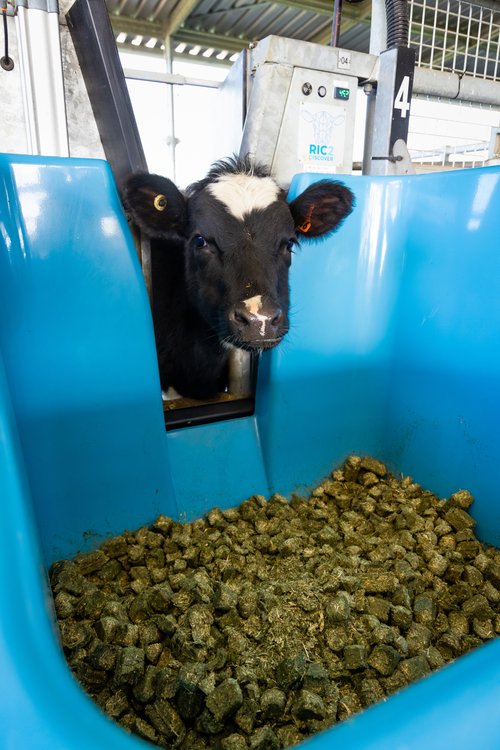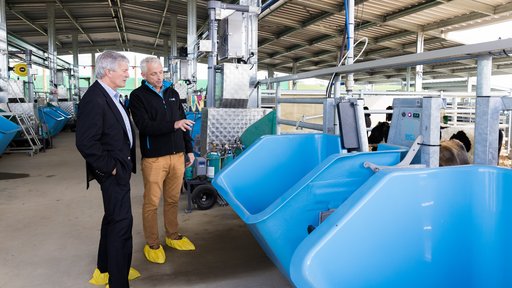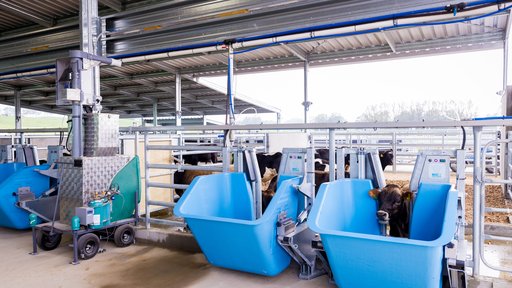Our methane research programme is investigating the link between methane emissions from bulls and their genetics in the hopes of providing Kiwi dairy farmers with the ability to breed more climate-friendly cows that produce less methane.
Funded by the New Zealand Agricultural Greenhouse Gas Research Centre (NZAGRC), this world-leading project is a joint initiative being run by LIC and CRV, who together sire 90% of the New Zealand dairy herd through their artificial breeding bulls.

About the research
Each year the new intake of young bulls to LIC and CRV’s Sire Proving Schemes have their methane emissions measured.

The bulls are housed in a purpose-built barn and fed lucerne hay cubes in feed bins that measure how much each bull eats.
The bulls independently visit a special methane measuring device. While there, they are fed pellets and methane from their burps and breath is measured, giving around five readings per animal, per day.
Results found there is genetic variation in the amount of methane emitted after accounting for the feed eaten by the bulls, with the lowest bulls emitting around 15-20% less methane than the average.
Around 10% of the variation that we see in methane is due to the genetics of the animal (heritability). The next step in the research is to see if the genetic variation responsible for methane emissions in growing young bulls is replicated in their daughters.
In partnership with Pāmu, we have bred daughters from bulls that we’ve identified to be high or low methane emitters. We're measuring their emissions as growing yearlings and will also measuring them during their first milking season to ensure they’re representative of their fathers.
- 2020: Pilot trial measuring methane from 20 young bulls.
- 2021: Methane measured from approx. 300 young bulls (LIC and CRV’s 2021 Sire Proving Scheme bulls).
- 2022: Methane measured from approx. 300 young bulls (LIC and CRV’s 2022 Sire Proving Scheme bulls). Group of cows mated with high and low methane bulls from 2021 Sire Proving Schemes.
- 2023: Methane measured from approx. 300 young bulls (LIC and CRV’s 2023 Sire Proving Scheme bulls). First offspring from high and low methane bulls born.
- 2024: Methane measurements taken from 398 yearling daughters.
- 2025: Daughters from high and low methane bulls lactating – methane measurements taken from daughters to ensure they’re representative of the methane measurements captured in trial and validate heritability e.g. low methane-emitting bulls produce low methane-emitting offspring, high methane-emitting bulls produce high methane-emitting offspring.
If this is successful, then:
- 2026: Final step! All artificial breeding bulls from LIC and CRV can have a methane breeding value, allowing farmers to select bulls who will produce low methane-emitting cows.


